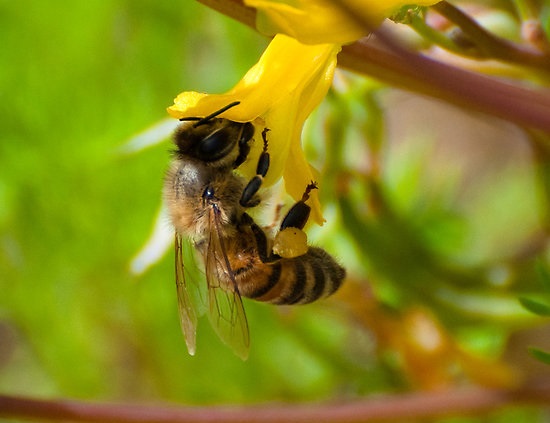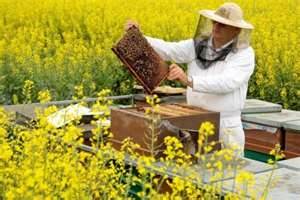From Nectar to Honey
1. The process starts as soon as the bees begin collecting the nectar. The bee uses her special, tube-shaped tongue to suck the nectar from the flower. She keeps a small portion of the nectar for herself to cover her energy needs.
2. The largest part of the harvest is already being processed on the way back to the hive from the collection site. In the bees’ special “honey stomach”, enzymes, organic acids and other substances are added.
3. Once back in the hive, the nectar is regurgitated and passed on to other worker bees. The nectar is constantly being enriched with enzymes, and the excess water is partially withdrawn.
4. The processed nectar is then deposited into a honeycomb cell in the form of a droplet.
5. During the ripening process, a significant amount of water evaporates from the honey, giving it a syrupy consistency. Fresh flower nectar contains around 70% water, fully ripe honey only contains around 18% water.
6. Once the honey is ripe, the bees seal the honeycomb with a wax lid.
Honey Extraction
Honey collection
The apiarist is able to recognize fully ripe honey by the wax lid covering the honey comb. When the hives feel nice and heavy, and the honeycomb is completely sealed, the beekeeper will begin collecting the honey.
Unsealing the honeycomb
The bees are carefully pushed off of the honeycomb. Then, the apiarist removes the wax lids with a special fork.
Extraction
After this, the full combs are placed in a so-called “honey extractor” or centrifuge and the honey is extracted. By using this method, valuable particles in the honey remain unscathed.
Honey processing
Sieving the honey
The honey is sieved to remove all foreign objects like bits of wax, large lumps of pollen and other impurities. By using this method, the smaller particles of pollen and the enzymes remain inside the honey.
The ripening process
After sieving, the honey is left to sit in closed containers for 3 to 5 days, so all remaining foreign particles, but mostly all the air bubbles, can rise to the surface. By removing the layer of foam that forms on the surface, we are left with a nice crystal clear honey.
Seeding the honey
By mixing liquid honey with a small amount of cream honey (seeding the honey), a beautiful, cream-like and spreadable honey is achieved. This way the crystallisation process is being controlled. Depending on the type of honey you are working with, a rapid crystallisation occurs. The crystals that form this way are much smaller, leaving the honey a nice smooth consistency rather than chunky.



